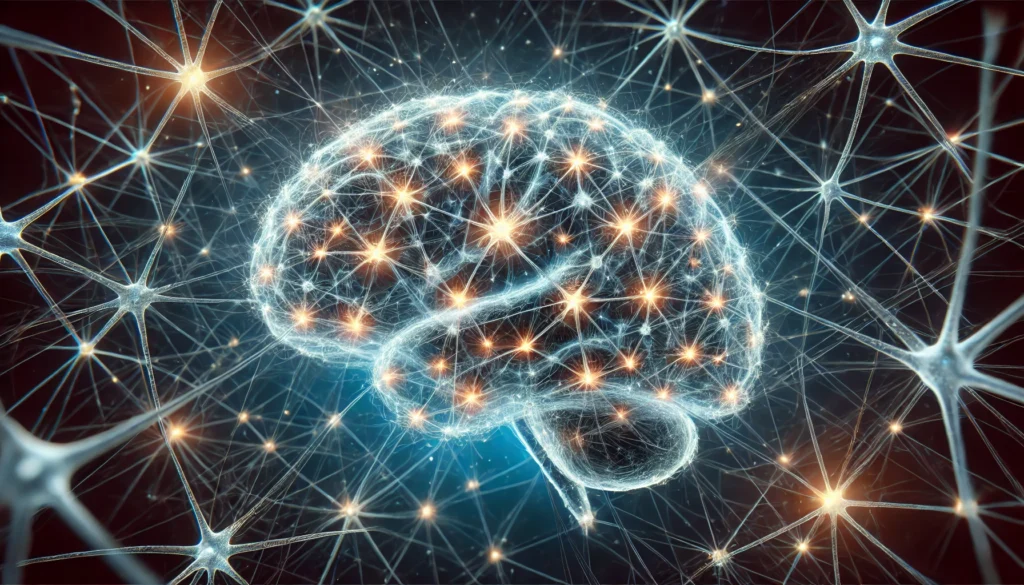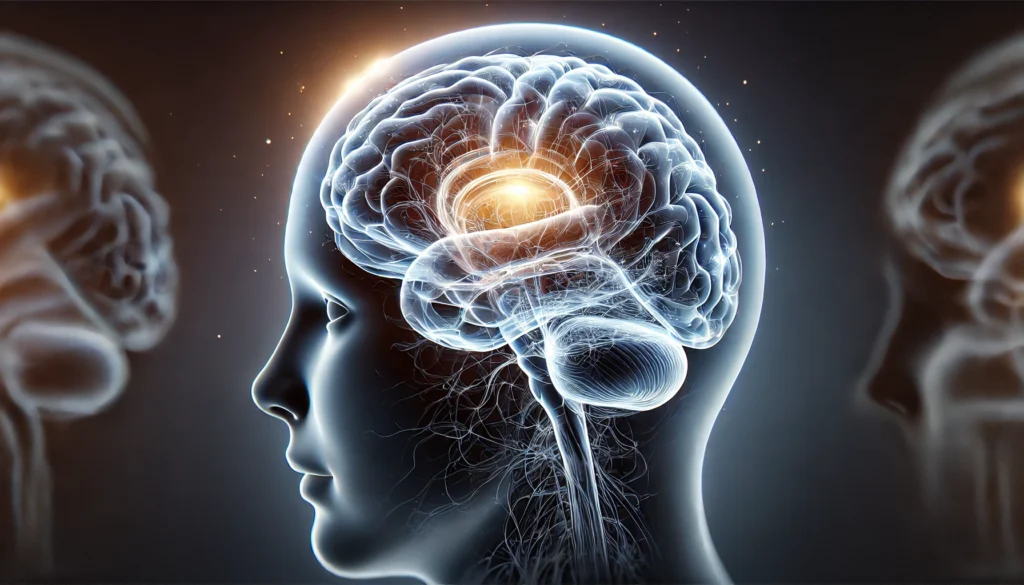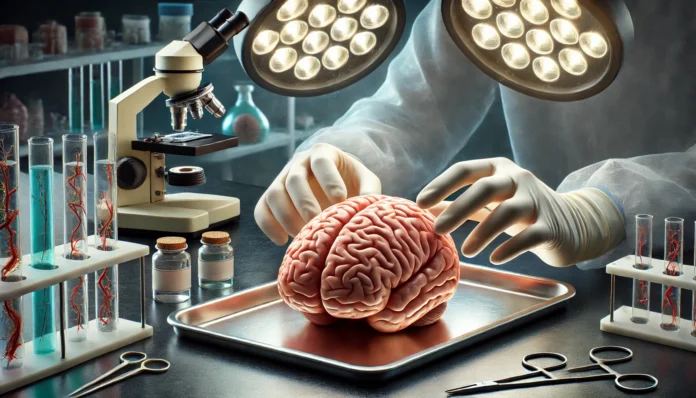Introduction
The human brain is often described as the most complex organ in the body, responsible for every thought, action, and emotion that defines the human experience. Yet, despite its significance, many people have little understanding of what a real brain of human looks like or how it functions. While images of the actual human brain may appear in textbooks and medical illustrations, seeing a real brain in real life provides an entirely different perspective. Understanding the brain biology of a living organism is crucial not only for scientists and medical professionals but also for anyone interested in cognitive enhancement, anti-aging, and longevity.
You may also like : Best Things for Brain Health: Expert-Backed Strategies to Keep Your Mind Sharp
This article explores the intricate structure of the brain, from its macroscopic appearance to its microscopic composition. We will examine its various regions, their functions, and the significance of neural networks in shaping cognition and behavior. Additionally, we will address common questions such as how many brains do humans have, the impact of aging on brain function, and how to maintain cognitive health over time. By the end of this comprehensive exploration, you will have a clearer understanding of what does a real brain look like and the remarkable biological mechanisms that govern human intelligence and consciousness.
The External Appearance of the Human Brain
When most people envision a real brain of human, they often picture the characteristic folds and grooves that define its surface. The human brain is typically soft, gelatinous, and encased within the protective skull. In a real brain in real life, it has a pale pinkish-gray hue when freshly extracted, but its color can darken due to oxidation over time. The surface of the brain is covered with gyri (ridges) and sulci (grooves), which increase its surface area and enhance cognitive capacity.
The actual human brain is divided into two hemispheres: the left and the right. These hemispheres are connected by the corpus callosum, a dense bundle of nerve fibers that facilitates communication between the two sides. The left hemisphere is primarily responsible for language, logic, and analytical thinking, while the right hemisphere is more involved in creativity, spatial awareness, and intuition. However, both hemispheres work together in nearly all cognitive processes, and the notion of being strictly “left-brained” or “right-brained” is largely a myth.
Beneath its surface, the brain contains several critical structures, including the cerebrum, cerebellum, and brainstem. Each of these regions plays a unique role in maintaining bodily functions, processing sensory information, and enabling higher-order thinking. Understanding these components in detail helps answer the question of what does a brain look like beyond its superficial features.
The Internal Structure of the Brain
At a deeper level, the brain biology of humans reveals an intricate network of neurons, glial cells, and neurotransmitters that facilitate communication throughout the body. The brain consists of both gray matter and white matter, each serving a distinct function.
- Gray Matter: Found in the outer layer of the cerebrum, gray matter contains neuronal cell bodies and is responsible for processing information, executing voluntary movements, and enabling higher cognitive functions.
- White Matter: Located beneath the gray matter, white matter consists of myelinated axons that transmit signals between different regions of the brain. It plays a critical role in coordinating various neurological processes.
Deep within the brain are several subcortical structures, including the hippocampus, amygdala, thalamus, and hypothalamus. The hippocampus is essential for memory formation, the amygdala regulates emotions, the thalamus acts as a relay station for sensory information, and the hypothalamus controls vital autonomic functions like hunger, thirst, and body temperature.

The Brain and Cognitive Function
The actual human brain is responsible for a vast array of cognitive functions, from basic reflexes to complex reasoning. The prefrontal cortex, located at the front of the brain, is particularly important for executive functions such as decision-making, problem-solving, and social behavior. This region continues to develop into early adulthood, which explains why impulse control and long-term planning improve with age.
Language processing primarily occurs in the left hemisphere, particularly in Broca’s area and Wernicke’s area. Damage to these regions can result in aphasia, a condition that affects speech production and comprehension. Meanwhile, the occipital lobe at the back of the brain is dedicated to visual processing, allowing humans to interpret and respond to their surroundings.
The real brain of human also plays a crucial role in emotional regulation. The limbic system, which includes the hippocampus and amygdala, governs emotional responses, memory formation, and motivation. These interactions between cognitive and emotional processes highlight the brain’s complexity and adaptability.
How Many Brains Do Humans Have?
A common question that arises in discussions of brain biology is how many brains do humans have? While humans have only one brain in the anatomical sense, some theories suggest that the gut and heart also function as secondary “brains” due to their extensive networks of neurons and influence on overall cognition.
The enteric nervous system, often referred to as the “gut brain,” consists of approximately 100 million neurons embedded in the digestive tract. It communicates with the central nervous system through the vagus nerve and plays a role in mood regulation, appetite control, and immune responses. Similarly, the heart has its own complex neural network that interacts with the brain, influencing emotions and stress responses.
Although these systems contribute to human health and cognition, they do not function independently from the real brain of human. Instead, they work in harmony to maintain physiological and psychological balance.
The Brain and Aging
As people age, changes in brain biology can lead to cognitive decline, memory loss, and increased susceptibility to neurodegenerative diseases. The volume of gray matter decreases over time, leading to a reduction in synaptic density and slower neural processing. However, research suggests that maintaining an active lifestyle, engaging in lifelong learning, and practicing mindfulness can help preserve cognitive function.
Neuroplasticity, the brain’s ability to reorganize and adapt, remains a key factor in counteracting the effects of aging. Even in later life, the real brain in real life retains the capacity to form new neural connections through activities like reading, solving puzzles, and socializing. Nutritional factors, including a diet rich in antioxidants, omega-3 fatty acids, and essential vitamins, also play a role in supporting brain health.

Frequently Asked Questions About the Human Brain
1. What does a real human brain look like when viewed up close?
A real human brain, when examined closely, has a wrinkled, soft, and gelatinous texture, giving it a somewhat fragile yet highly intricate appearance. In a real brain in real life, its color varies depending on oxygenation, often appearing pinkish when fresh but turning darker after preservation. Unlike the glossy and artificial depictions seen in textbooks, the actual human brain has a more natural, almost rubbery consistency, with the presence of visible blood vessels crisscrossing its surface. The gyri (ridges) and sulci (grooves) are prominent, maximizing surface area to accommodate billions of neurons. Seeing a real brain of human in an anatomical dissection or medical setting can be a profoundly humbling experience, as it reveals the tangible structure responsible for every thought, emotion, and movement in a person’s life.
2. How does the brain’s structure influence its function?
The structure of the actual human brain is deeply linked to its functionality, with different regions specialized for various tasks. The cerebral cortex, the brain’s outermost layer, is responsible for higher cognitive functions such as problem-solving, reasoning, and voluntary movements. The limbic system, buried beneath the cortex, regulates emotions, while the cerebellum fine-tunes motor control and balance. In answering what does a real brain look like, understanding the neural pathways connecting different areas highlights how memory, decision-making, and sensory interpretation work in harmony. This intricate structural arrangement allows for fluid and adaptable responses to both internal and external stimuli, ensuring survival and complex interactions.
3. How many brains do humans have, and why is this concept sometimes debated?
Biologically speaking, humans have one central brain, but some researchers suggest the presence of additional “brains” in other parts of the body. The enteric nervous system, located in the gut, is sometimes called the “second brain” because it contains over 100 million neurons that regulate digestion and communicate with the central nervous system. Similarly, the heart has a network of neurons that influence emotions and stress responses. While these systems do not function independently like the real brain of human, they contribute to bodily processes in ways that are still being explored. This growing area of research on how many brains do human have suggests that intelligence and cognition are more distributed throughout the body than previously thought.
4. What role do neurotransmitters play in brain biology?
Neurotransmitters are chemical messengers that facilitate communication between neurons in the actual human brain. They regulate mood, memory, and motor functions, with different neurotransmitters performing specific roles. Dopamine, for instance, is involved in pleasure and reward, while serotonin affects mood stability and sleep regulation. A deficiency or excess of certain neurotransmitters can lead to disorders such as depression, anxiety, or Parkinson’s disease. Understanding brain biology at the molecular level helps scientists develop targeted treatments for neurological conditions. These chemicals underscore how the real brain in real life operates not just through electrical impulses but through finely tuned chemical interactions as well.
5. Can brain function be improved or enhanced naturally?
Cognitive function can be improved through various lifestyle modifications, including physical exercise, mental stimulation, and proper nutrition. Regular aerobic activity has been shown to promote neurogenesis—the formation of new neurons—while brain-training exercises strengthen neural connections. Foods rich in omega-3 fatty acids, antioxidants, and essential vitamins support brain biology by reducing inflammation and promoting cell health. Additionally, mindfulness practices, such as meditation, can enhance focus and emotional regulation by strengthening the prefrontal cortex. The adaptability of the real brain of human means that even in adulthood, cognitive abilities can be refined and preserved with consistent effort.
6. How does the human brain differ from the brains of other animals?
While many animals possess complex nervous systems, the actual human brain is uniquely specialized for abstract reasoning, problem-solving, and language. The prefrontal cortex, significantly larger in humans than in other species, enables long-term planning and self-awareness. Additionally, the human brain has a higher neuron density and more extensive neural connections, supporting sophisticated communication and social structures. Even though primates and dolphins exhibit high intelligence, the capacity for creativity, culture, and complex emotional experiences sets the human brain apart. Observing the real brain in real life of different species provides valuable insights into evolutionary adaptations and the biological basis of intelligence.
7. What does aging do to brain function and structure?
Aging leads to structural and functional changes in the real brain of human, often resulting in cognitive decline, memory loss, and slower processing speeds. Over time, gray matter volume decreases, and synaptic connections become less efficient, affecting learning and recall abilities. However, the brain retains plasticity, meaning new connections can still be formed, particularly through lifelong learning and active engagement. Studies suggest that maintaining social interactions, engaging in problem-solving activities, and consuming a diet rich in brain-supporting nutrients can slow cognitive decline. These insights into brain biology demonstrate that while aging alters neurological function, proactive habits can help mitigate its effects.
8. Can the brain heal itself after injury?
The human brain has remarkable regenerative capabilities, though its ability to fully recover depends on the severity and location of the injury. After trauma, stroke, or disease, the actual human brain can reorganize itself through neuroplasticity, allowing other areas to compensate for lost function. Rehabilitation therapies, including cognitive exercises and physical therapy, encourage this adaptive process. However, certain injuries, such as those affecting the hippocampus, may result in irreversible damage to memory formation. Understanding what does a real brain look like after injury through brain imaging techniques provides valuable information for developing targeted treatment plans.
9. How do modern imaging techniques help us understand brain biology? Advanced imaging technologies, such as MRI and fMRI, have revolutionized our understanding of brain biology by allowing researchers to observe neural activity in real time. These techniques help identify structural abnormalities, monitor brain development, and detect early signs of neurological disorders. Functional MRI scans provide insight into which brain regions activate during specific cognitive tasks, offering clues about memory processing and decision-making. Brain imaging also plays a crucial role in assessing the effects of meditation, therapy, and pharmacological interventions. Examining a real brain in real life through these methods enhances both clinical diagnosis and neuroscientific research.
10. What breakthroughs are shaping the future of neuroscience?
Recent advancements in neuroscience are paving the way for revolutionary treatments and deeper insights into human cognition. Brain-computer interfaces (BCIs) are being developed to help individuals with paralysis control devices using neural signals, opening possibilities for enhanced communication and mobility. Gene-editing technologies, such as CRISPR, are being explored to address genetic factors in neurodegenerative diseases. Additionally, AI-driven models are providing unprecedented simulations of actual human brain activity, enabling more accurate predictions of neurological responses. As research progresses, the study of brain biology continues to reveal new pathways for enhancing human health, longevity, and intelligence.

Conclusion
Understanding what does a real brain look like goes beyond its physical appearance; it involves exploring its intricate structure, functions, and adaptability. The actual human brain is a marvel of evolution, housing billions of neurons that shape cognition, emotions, and behavior. Whether examining the real brain of human from a macroscopic or microscopic perspective, it becomes evident that its complexity is unparalleled.
Maintaining brain health is essential for longevity and cognitive enhancement. By engaging in lifelong learning, adopting a healthy diet, and staying physically active, individuals can support their brain biology and mitigate the effects of aging. As research continues to unveil new insights into neuroplasticity and cognitive function, the potential for optimizing brain health becomes even more promising. In the pursuit of knowledge and well-being, understanding the actual human brain remains one of the most fascinating endeavors of modern science.
human brain anatomy, neuroscience research, brain function and structure, cognitive health tips, brain imaging technology, neural networks and cognition, brain plasticity and learning, memory enhancement techniques, brain aging and longevity, neurological disorders overview, brain nutrition and diet, mental health and brain function, brain injury recovery, neurotransmitters and mood, brain training exercises, mindfulness and brain health, optimizing cognitive performance, emotional regulation and the brain, brain-computer interfaces, emerging neuroscience innovations
Further Reading:
What We Know About the Brain Structure–Function Relationship
What Does An Aging Brain Look Like – Brain Changes
Compressing human brain activity for studying brain function
Disclaimer
The information contained in this article is provided for general informational purposes only and is not intended to serve as medical, legal, or professional advice. While Health11News strives to present accurate, up-to-date, and reliable content, no warranty or guarantee, expressed or implied, is made regarding the completeness, accuracy, or adequacy of the information provided. Readers are strongly advised to seek the guidance of a qualified healthcare provider or other relevant professionals before acting on any information contained in this article. Health11News, its authors, editors, and contributors expressly disclaim any liability for any damages, losses, or consequences arising directly or indirectly from the use, interpretation, or reliance on any information presented herein. The views and opinions expressed in this article are those of the author(s) and do not necessarily reflect the official policies or positions of Health11News.


